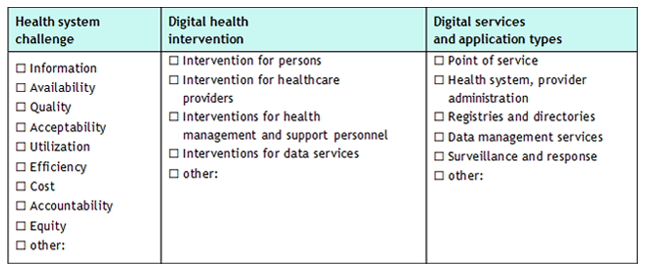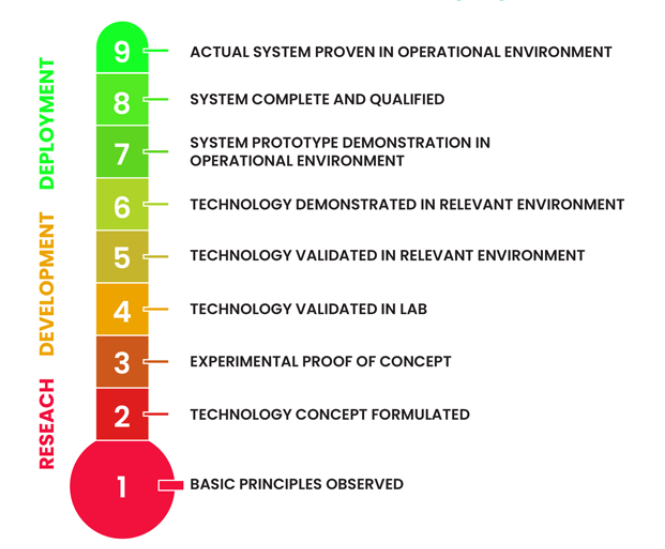1 / Classification
The digital health landscape involves various stakeholders, such as:
- community/government representatives,
- technologists,
- the health workforce,
- project managers,
- network operators,
- researchers,
- individuals (clients, residents) etc.
Despite their collaboration, a common and standardized language (digital health ontology) is vital to plan, conduct, and evaluate inventories of existing assets, identify gaps and duplications, conduct research, assess effectiveness, and foster alignment across various digital health implementations. The World Health Organization provides a “Classification of digital interventions, services and applications in health”, which aims to create a shared language to describe the uses of digital technology for health (World Health Organization, 2023).
Overall, the classification is organized around 3 axes:
- health system challenge,
- digital health intervention,
- digital services and application types.
Additional information and examples for each category see here.

2 / Technology readiness level
The Technology Readiness Level (TRL) scale was originally defined by NASA in the 1990’s to indicate the maturity of a given technology. In 2014, the scale was introduced to EU funded projects in the Horizon 2020 program (APRE & CDTI, 2022).
Usually, new technologies undergo different stages of the TRL scale throughout their life cycle. Throughout the research and development stages, there can be iterations among the various TRL levels. In this context, the TRL scale helps to evaluate and better understand the current state and project progress.
To avoid complications due to malfunctioning of technology it is important to choose technology that is well developed and tested before you start desired digital transformation; in practice we suggest you choose technology with readiness level above 7 (signifying its readiness for deployment).

This is especially important because malfunctioning technology both slows down the digitalization process and even more importantly decreases the trust of technology users, who become reluctant to work with technology in the future. The only exception is, if the long-term care facility decides to partake in the research project and undertakes the development of technology itself; in that case, it is important to communicate to all who will come in contact with the solution that they are part of the research and development process and to train them in what that means.
TRL 1 – basic principles observed (case of key enabling technologies):
scientific research has just started, and the first results are used to be translated into future research and development
TRL 2 – technology concept formulated
basic principles have been studied and the first experiments/tests are designed based on the initial findings (still speculative)
TRL 3 – experimental proof of concept
analytical and laboratory studies conducted, results from experiments/tests support the initial idea (proof-of-concept model)
When TRL 3 is reached, one can conclude that the new technology is feasible from a scientific point of view.
TRL 4 – Technology validated in the lab
Validation of technology has been performed at the laboratory level; a laboratory prototype is available.
TRL 5 – technology validated in a relevant environment
Technology is tested in a more realistic, but still under control mode environment.
When TRL 5 is reached, one can conclude that the new technology is feasible from a technological point of view.
TRL 6 – technology demonstrated in the relevant environment
To confirm that engineering is feasible, the prototype is demonstrated in (industrially) relevant environment.
TRL 7 – system prototype demonstration in an operational environment
The prototype/working model is demonstrated in an operational environment under ‘normal’ conditions and timings.
When TRL 7 is reached, one can conclude that the new technology is reliable from a technological point of view.
TRL 8 – system complete and qualified
The technology is ready for implementation into an already existing technology or technology system.
TRL 9 – actual system proven in the operational environment
The technology system has been proven during operations, as competitive technology.
When RL 9 is reached, one can speak of a commercial technology.
